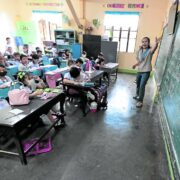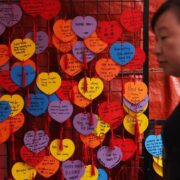The miracle of generosity

July 28, 2024—17th Sunday in Ordinary Time
Readings: 2 Kings 4: 42-44; Psalm 145, R.
The hand of the Lord feeds us; he answers all our needs.;
Ephesians 4: 1-6; Gospel – John 6: 1-15
In his post-Edsa reflection back in 1986, then Jesuit priest and theologian Fr. Antonio Lambino used today’s Gospel for his talk.
He pointed out that there were two interpretations of this Gospel. The more traditional one is the miracle was the actual physical multiplication of the loaves and fish.
The other interpretation is, the Lord was able to inspire the people so that those who had food and drink shared these with those who didn’t. He inspired generosity in others. With this, the situation of scarcity turned into a moment of abundance.
The story of the multiplication of the loaves and fish in John is very relevant to us now in a world where scarcity of material resources for the great majority lies side by side with a super abundance of material resources for a very tiny minority.
Thus, the grace we pray for is the miracle of generosity. Second, we will reflect on scarcity and abundance. Third, we will reflect on the impact of this story on our faith.
In the opening scene of this Gospel story, we know that great crowds followed Jesus because of their hunger for his word, his teachings, and his healing.
At the end of the day, this hunger became a physical hunger. This was where the situation of the scarcity of food began.
Philip gave us a clear idea of the problem: “Two hundred days’ wages worth of food would not be enough for each of them to have a little.” (cf. John 6: 1-15)
Andrew tried to resolve this by bringing a young boy with five loaves and two fish. With this the miracles takes place.
We can pick up two lessons from this. Both are lessons in generosity.
Superabundance of grace
As we stated, the miracle of moving from scarcity to abundance was due to Jesus inspiring generosity in others to share what they had.
Even the other interpretation of the actual physical multiplication is a story of generosity. The young boy with five loaves and two fish reminds us that we must bring and generously offer the little that we have for the miracle to take place.
Out of our poverty the Lord creates God’s superabundance of grace.
This is our second point for reflection, the movement from scarcity to abundance. The central element of this movement is the miracle. Whether it is the miracle of actual physical multiplication or the miracle of generosity, it reminds us that we can overcome scarcity. There is a way out of the poverty and want of the great majority of our people.
It requires the offering of the little that we have—together—to create abundance. This is the solidarity and fraternity that Pope Francis constantly invites us to.
Yes, there is hope, and it is within our power to move from scarcity to abundance by sharing generously not just from our surplus, but even from our own needs.
This is the conversion we pray for to see our faith become a faith of hope, especially hope for others. This is possible only with a faith of empathy and compassion. It is this faith that inspires in us solidarity and fraternity. It is this faith that moves us into action.
It is at this point that Jesus’ miracle takes place, when we allow ourselves to become instruments in his hands to respond to the needs, the hungers of others.





















